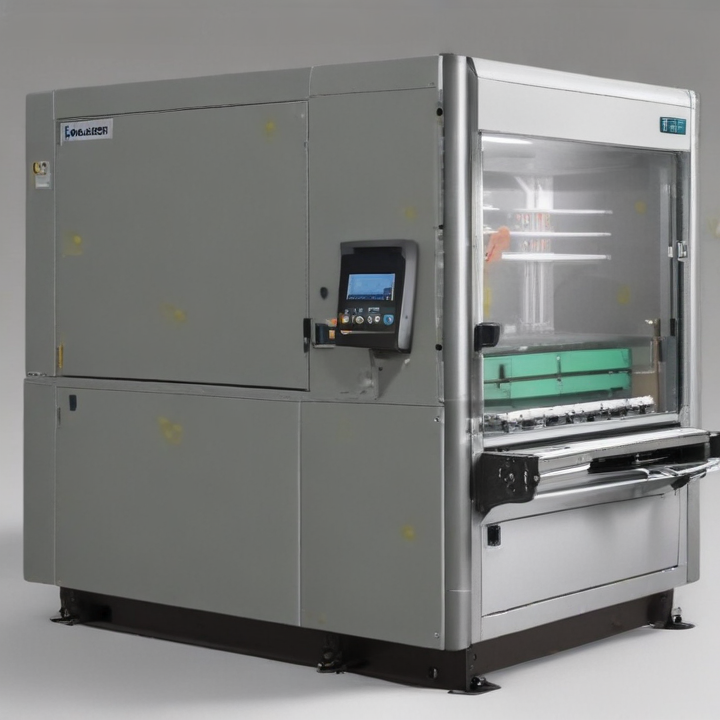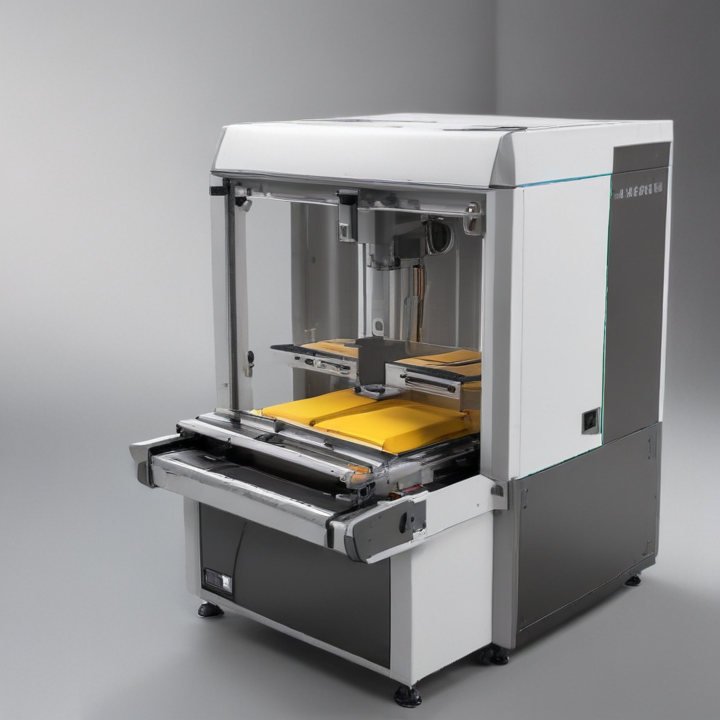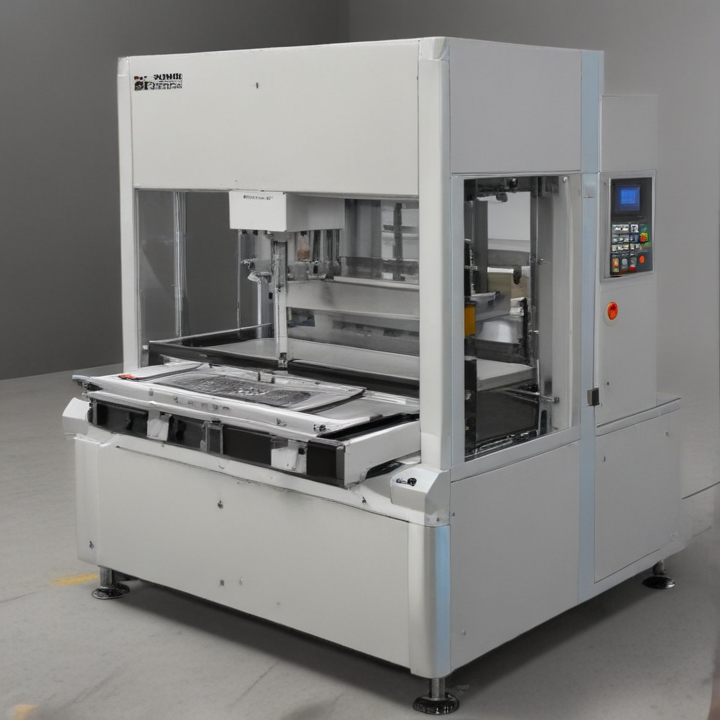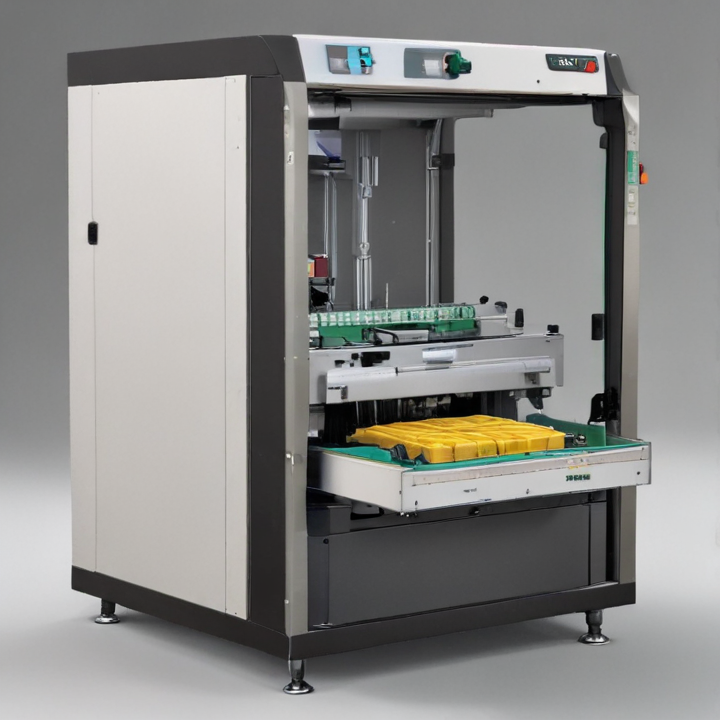List Technical Parameters of “automatic case packer”
An automatic case packer is a sophisticated piece of equipment used in various industries to automate the process of packaging products into cases. Here are the key technical parameters that typically define such a machine:
1. Speed:
– Cycle Time: The number of cases packed per minute. Commonly ranges between 10-50 cases per minute.
– Throughput: Products per minute or hour, depending on the machine’s capacity.
2. Case Dimensions:
– Min/Max Width, Height, Depth: Typically specified to ensure the packer accommodates a range of case sizes.
3. Product Dimensions:
– Min/Max Dimensions: Dictates the range of product sizes the packer can handle.
4. Payload:
– Weight Capacity: Maximum weight of products per case, often up to 50 kg or more.
5. Power Requirements:
– Voltage: Commonly 220V or 380V, 50/60 Hz.
– Power Consumption: Typically measured in kW.
6. Air Requirements:
– Pressure: Generally between 0.6 to 0.8 MPa.
– Consumption: Liters per cycle or minute.
7. Control System:
– PLC (Programmable Logic Controller): For automation control.
– HMI (Human-Machine Interface): Touch screen for settings and diagnostics.
8. Material Handling:
– Conveyor Systems: For infeed and outfeed.
– Robotic Arms: If applicable, for precision placement.
9. Construction Material:
– Frame: Usually stainless steel for durability and hygiene.
10. Integration Capabilities:
– Communication Interfaces: Option for Ethernet, Profibus, etc., for integration with other systems.
11. Safety Features:
– Emergency Stops: Strategically placed.
– Safety Guarding: Around moving parts.
12. Environmental Conditions:
– Operating Temperature: Typically between 0°C to 40°C.
– Humidity Tolerance: Often up to 90%, non-condensing.
These parameters help ensure that the automatic case packer meets the specific needs of production environments, maximizing efficiency and maintaining product integrity.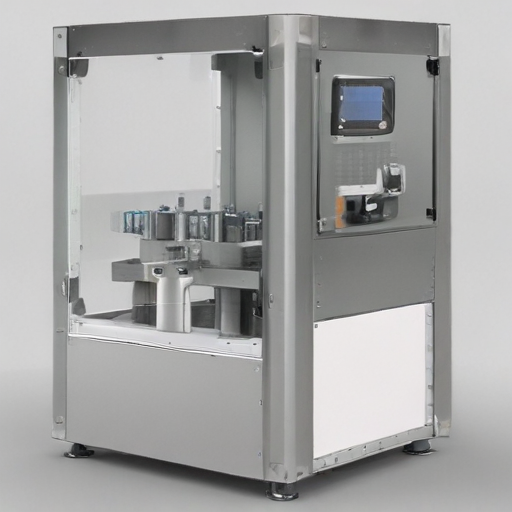
List Product features of “automatic case packer”
An automatic case packer is a sophisticated piece of equipment designed to enhance productivity and efficiency in the packaging process. Below are key features typically associated with automatic case packers:
1. High Speed Operation:
– Capable of handling and packing multiple products per minute, ensuring a higher throughput in the production line.
2. Versatility:
– Can accommodate various product types, sizes, and shapes, making it suitable for different industries such as food and beverage, pharmaceuticals, and consumer goods.
3. Precision and Consistency:
– Advanced robotics and sensing technologies ensure accurate product placement and consistent packing quality.
4. User-friendly Interface:
– Equipped with intuitive control panels and touchscreens, allowing operators to easily set parameters, monitor performance, and troubleshoot issues.
5. Adaptability:
– Features modular design options enabling easy integration with existing lines or future upgrades.
6. Compact Footprint:
– Designed to take up minimal floor space, making it suitable for facilities with limited space.
7. Automatic Case Erecting and Sealing:
– Comes with integrated functions for case forming, product loading, and sealing, offering a complete packaging solution.
8. Customizable Packing Configurations:
– Flexibility to create different packing patterns and configurations to meet varying packaging requirements.
9. Durable Construction:
– Built from robust materials to withstand continuous operation and harsh industrial environments.
10. Energy Efficiency:
– Incorporates energy-saving features to minimize power consumption and operational costs.
11. Safety Features:
– Includes safety enclosures, emergency stop buttons, and other protective mechanisms to ensure operator safety.
12. Minimal Maintenance:
– Designed for easy maintenance with readily accessible parts andbuilt-in diagnostic tools to quickly identify and resolve issues.
These features make automatic case packers invaluable for companies seeking to optimize their packaging operations, reduce labor costs, and improve overall efficiency.
List Application of “automatic case packer”
An automatic case packer is a sophisticated piece of machinery widely used in various industries for efficient packaging processes. Below are the key applications of automatic case packers:
1. Food and Beverage Industry: Automatic case packers streamline the packaging of bottles, cans, cartons, and pouches containing food and beverages. This ensures high-speed packing, maintains hygiene, and reduces labor costs.
2. Pharmaceuticals: In the pharmaceutical sector, where precision and cleanliness are crucial, automatic case packers handle the packaging of medicinal bottles, blister packs, and boxes, ensuring accuracy and compliance with health regulations.
3. Cosmetics and Personal Care: Cosmetics and personal care products like lotions, creams, and shampoos are frequently packed using automatic case packers. This maintains the aesthetic appeal and integrity of packaging, essential for brand marketing.
4. Consumer Electronics: These machines are used to pack electronic gadgets, accessories, and components safely, ensuring they reach the consumer without damage.
5. Automotive: Components such as spare parts, lubricants, and accessories are securely packed using automatic case packers to prevent damage during transit.
6. Household Products: Items like detergents, cleaners, and other household goods are efficiently packaged, aiding in faster distribution to retail shelves.
7. E-commerce Fulfillment: Automatic case packers facilitate quick and accurate packaging, essential for meeting the high demand and varied packaging requirements of online retail.
8. Agriculture: Packaging of seeds, fertilizers, and pesticides is handled efficiently, ensuring secure and tamper-proof packaging.
Automatic case packers significantly enhance efficiency, reduce labor costs, and ensure consistency and reliability in packaging across various industries, meeting both regulatory standards and consumer expectations.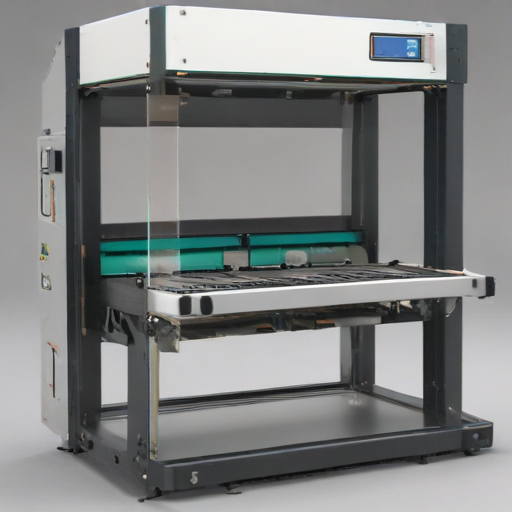
List Various Types of “automatic case packer”
Automatic case packers are vital in modern manufacturing and packaging lines, offering efficiency and precision. Here are various types:
1. Horizontal Case Packers: These machines load products horizontally into cases. They are ideal for products that need to be laid flat, such as food products, pharmaceuticals, and cosmetics.
2. Vertical Case Packers: Such packers load items vertically, suitable for tall or stackable products. They are often used in the food and beverage industry for bottles, cans, or jars.
3. Wrap-Around Case Packers: These packers create a case by wrapping it around the product, ensuring a snug fit. This type is perfect for creating retail-ready packages and is often used for beverage cartons or multipacks.
4. Side-Load Case Packers: Ideal for stable items, these pack products into cases from the side. They are frequently used for products in trays or smaller boxes.
5. Pick-and-Place Case Packers: Using robotic arms, these machines pick up products and place them precisely into cases. They offer high flexibility and are suitable for delicate or irregularly shaped items.
6. Top-Load Case Packers: These packers load products from the top, making them suitable for a wide range of products, including cartons, bags, or pouches. They are versatile and can handle various sizes and shapes.
7. Robotic Case Packers: Incorporating advanced robotics, these packers offer high precision and adaptability, often used across multiple industries for complex packaging needs. They can handle diverse items with minimal changeover time.
8. Integrated Case Packers: Combining multiple packaging functions, these machines can erect, load, and seal cases. They are efficient for high-speed production lines, offering comprehensive solutions in one machine.
Each type caters to specific packaging needs, enhancing efficiency and ensuring the integrity of the product during transit.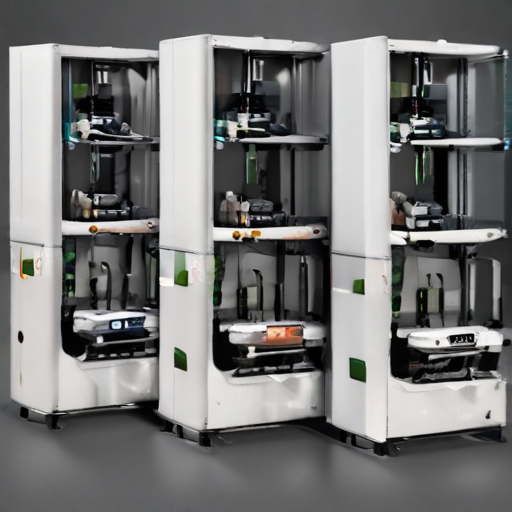
Custom Manufacturing Options for automatic case packer
When selecting a custom automatic case packer, it’s crucial to evaluate various customization options to match specific operational requirements. Here are key aspects to consider, ensuring they fall within your 300-word constraint:
1. Packaging Speed & Throughput: Tailor the machine’s speed to align with your production line’s pace. Options range from low-speed for delicate items to high-speed models for robust manufacturing lines.
2. Product & Case Variability: Customize for different product shapes and sizes. Some packers offer modular designs to handle multiple SKUs without extensive reconfiguration, which is perfect for variably-sized cases ranging from small cartons to large boxes.
3. Loading Orientation: Decide between top-loading, side-loading, or wrap-around packing mechanisms. Top-loading is versatile, side-loading is compact, and wrap-around is highly secure for heavy-duty packing.
4. Material Handling: Adapt the packer to use various packaging materials such as corrugated boxes, trays, or shrink wraps, depending on your product protection needs.
5. Integration Capabilities: Ensure seamless integration with your existing production line, conveyors, and robotic arms. PLC (Programmable Logic Controller) integration facilitates streamlined operations and easy synchronization with other machinery.
6. Automation Level: Select from semi-automatic to fully automatic systems based on your labor preferences. Fully automatic systems reduce labor costs and manual intervention while semi-automatic options offer flexibility.
7. Footprint & Space Considerations: Custom packers can be designed to fit space constraints, offering compact models for smaller factories or more expansive setups for larger operations.
8. Technology & Features: Advanced features such as vision systems for quality checks, IoT connectivity for real-time monitoring, and machine learning capabilities for continuous improvement in packing efficiency.
9. Maintenance & Support: Ensure easy access to parts and support services, crucial for minimizing downtime.
By focusing on these key customizable features, companies can enhance efficiency, reliability, and performance of their automatic case packing processes.
List Quality Control and The Manufacturing Process of “automatic case packer”
### Quality Control of Automatic Case Packer
1. Incoming Material Inspection: Verify materials like sensors, actuators, and mechanical parts meet specifications.
2. Component Testing: Each sub-assembly (e.g., robotic arm, conveyor system) undergoes individual functional testing.
3. Software Verification: Ensure control software is free from bugs and complies with operational requirements.
4. Integration Testing: Assess the complete system’s performance under varied conditions. Simulate different packaging scenarios.
5. Calibration: Fine-tune sensors and actuators for optimal accuracy and precision.
6. Final Inspection: Conduct comprehensive evaluations including performance, safety features, and compliance with industry standards.
7. Performance Validation: Operate the packer in a real-time production environment to ascertain reliability and efficiency.
### Manufacturing Process of Automatic Case Packer
1. Design and Engineering: Develop detailed technical drawings and create prototypes based on customer requirements and industry standards.
2. Material Procurement: Source high-quality components, including motors, sensors, and control systems, from reliable suppliers.
3. Mechanical Assembly: Assemble the machine frame, conveyors, and mechanical sub-assemblies using precision tools and jigs.
4. Electrical Assembly: Install wiring, sensors, actuators, and control panels. Ensure all electrical connections comply with safety standards.
5. Software Installation: Load custom software on the PLC (Programmable Logic Controller) and integrate it with the HMI (Human-Machine Interface).
6. System Integration: Combine mechanical and electrical systems to form a complete assembly. Ensure all components interact seamlessly.
7. Testing and Validation: Conduct rigorous tests such as dry runs and load tests to refine system performance.
8. Quality Assurance: Perform a final QA check to ensure all systems operate at peak efficiency and meet quality standards.
9. Packaging and Shipping: Carefully package the finished case packer to prevent damage during transit, and ship it to the customer.
Attention to detail during both quality control and manufacturing ensures a reliable and efficient automatic case packer.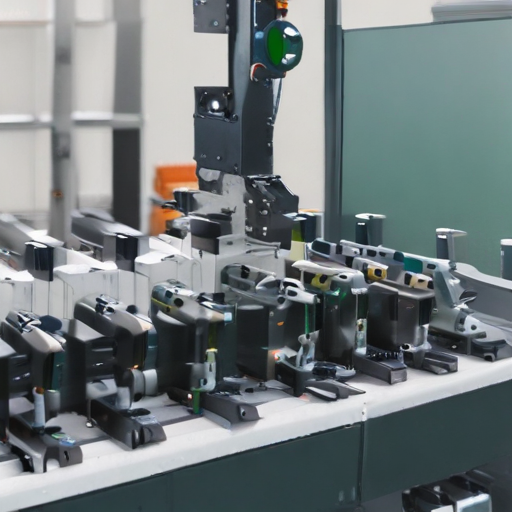
How to use “automatic case packer”
Operating an automatic case packer efficiently involves several key steps:
1. Read the Manual: Always begin by thoroughly reading the user manual provided by the manufacturer. It contains vital information about setup, operation, and safety.
2. Setup:
– Positioning: Place the machine on a stable, level surface near the production line.
– Power and Air Supply: Connect the machine to the appropriate power and compressed air sources as specified in the manual.
– Loading Materials: Load the packaging materials, such as boxes, cases, and product units, into their respective hoppers and feeders.
3. Programming:
– Control Panel: Use the control panel to set up parameters such as case size, product dimensions, packing arrangement, and speed.
– Calibration: Run a test cycle to ensure the machine is accurately calibrated to handle your specific products and cases.
4. Operation:
– Start-Up: Turn on the machine and initiate the automatic operation mode. Monitor it closely during the initial runs.
– Monitoring: Keep an eye on the machine for jams, misfeeds, or any irregularities. Modern machines often have sensors and alarms to alert of any issues.
– Adjusting: Make necessary adjustments based on observed performance for optimal efficiency.
5. Maintenance:
– Routine Checks: Regularly inspect the machine for wear and tear, especially moving parts and sensors.
– Cleaning: Clean the machine regularly to prevent dust and debris accumulation.
– Lubrication: Follow the manufacturer’s guidelines for lubricating moving parts.
6. Safety:
– Emergency Stops: Familiarize yourself with emergency stop buttons and safety protocols.
– Training: Ensure all operators are trained on machine operation and safety procedures.
By adhering to these steps, you can maximize the efficiency and longevity of your automatic case packer while ensuring safe operation.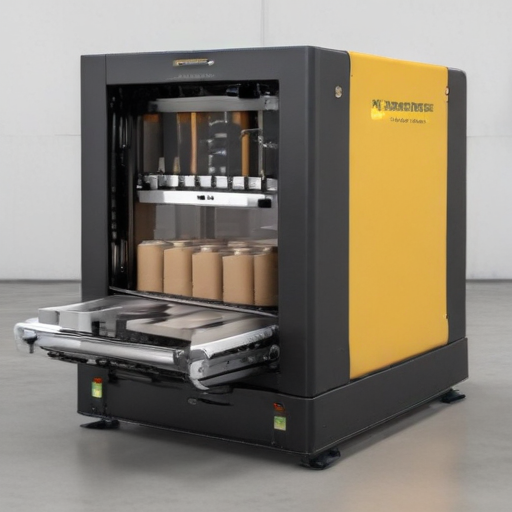
List Properties and Terms of “automatic case packer”
An automatic case packer is a machine used in packaging operations to efficiently pack products into cases, boxes, or trays. Here are some key properties and terms associated with automatic case packers:
### Properties:
1. Automation Level: These machines are fully automated, reducing the need for manual labor and increasing operational efficiency.
2. Speed: High-speed packing capabilities can handle numerous products per minute, enhancing productivity.
3. Versatility: Can accommodate various product sizes, shapes, and packaging materials, offering flexibility in operations.
4. Precision: Advanced technology ensures precise placement and packing of products to minimize damage and maximize space usage.
5. Integration: Often integrated with other packaging line equipment like conveyors, palletizers, and labeling machines for seamless operations.
6. Durability: Built with robust materials to withstand the rigors of continuous operation in industrial environments.
7. Adjustability: Configurable for different pack patterns and case sizes without extensive downtime.
8. Safety Features: Equipped with safety guards, emergency stop buttons, and sensors to protect operators and reduce accidents.
9. User Interface: Modern machines come with touchscreen panels and user-friendly interfaces for easy operation and monitoring.
10. Maintenance: Designed for minimal maintenance with easy access to components for quick repairs and servicing.
### Terms:
1. Infeed System: Mechanism that delivers products to the packer.
2. Collation: The process of arranging products into a specific order or pattern before packing.
3. Case Erector: A component that forms flat case blanks into open boxes ready for packing.
4. Tray Pack: A configuration where products are placed in trays rather than closed boxes.
5. Pick and Place Robot: Robotic arm used to pick products and place them into cases.
6. Vision System: Cameras and sensors used to ensure proper alignment and quality control.
7. End-of-Line Packaging: Refers to the stage where products are packed and prepared for shipment or final handling.
8. Servo Motors: Motors used for precise control of movement in the packer.
9. Throughput: The number of units the machine can pack per minute or hour.
10. Changeover: The process of switching the machine setup to handle different products or case sizes, ideally quick to minimize downtime.
In summary, automatic case packers are essential in modern packaging lines, offering high efficiency, versatility, and safety. Their integration and advanced features greatly enhance operational capabilities.
List The Evolution history of “automatic case packer”
The evolution of the automatic case packer traces back to advancements in industrial automation and packaging technologies over several decades.
1950s-1960s: Early Innovations
– The concept of mechanized packaging began to take shape post-World War II, driven by the increased demand for higher production capacities and improved efficiency in manufacturing.
– Initial designs were simple, semi-automatic machines that required significant human intervention.
1970s: Basic Automation
– The introduction of rudimentary automation incorporated basic mechanical systems which could perform repetitive tasks, reducing manual labor.
– Early automatic case packers were designed to handle uniform products with simple packaging formats.
1980s: Technological Advancements
– Microprocessors and programmable logic controllers (PLCs) revolutionized automatic case packers, enhancing their precision and flexibility.
– Machines became capable of handling a wider variety of packaging formats and product types with minimal manual adjustments.
1990s: Increased Efficiency and Customization
– Advances in robotics and sensor technology allowed for higher-speed operations and greater customization.
– Vision systems started to be integrated, enabling real-time adjustments and quality control.
2000s: Smart Manufacturing
– The rise of the Internet of Things (IoT) and smart manufacturing technologies brought connectivity and data analytics into these systems.
– Automatic case packers became part of larger, integrated production lines with seamless communication between different machines and systems.
2010s: Advanced Robotics and AI
– Enhanced robotics and artificial intelligence (AI) introduced even higher levels of adaptability and efficiency.
– Machines could now optimize their operations autonomously, adjusting to different products and packaging materials on-the-fly.
2020s: Sustainability and Further Integration
– Emphasis on sustainability led manufacturers to develop eco-friendly packaging machines capable of handling biodegradable and recyclable materials.
– Cloud computing and big data analytics improved real-time monitoring, predictive maintenance, and operational efficiency.
In essence, the automatic case packer has evolved from basic mechanical systems to highly sophisticated, integrated components of smart manufacturing environments, continuously adapting to technological advancements and market demands.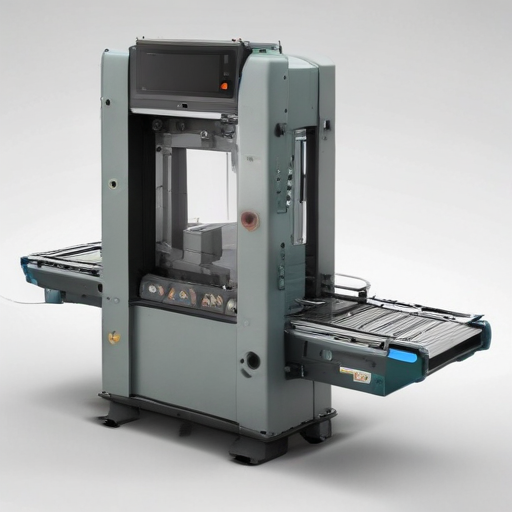
How to Select a Reliable automatic case packer
Choosing a reliable automatic case packer involves multiple considerations to ensure it meets your operational needs efficiently. Here are key factors to consider:
1. Compatibility with Products: Make sure the packer is compatible with the types, sizes, and shapes of the products you’re handling. Check for adjustable settings to accommodate different product specifications.
2. Speed and Efficiency: Assess the machine’s packing speed and compare it with your production demands. Ensure it can handle peak loads without sacrificing quality.
3. Build Quality and Durability: Look for machines made from robust materials like stainless steel. Reliable brands often come with better designs and longer lifespans.
4. Ease of Use: The machine should have an intuitive control panel and should be easy to operate and maintain. Consider the level of automation and whether it is user-friendly.
5. Flexibility: Assess if the packer can be customized or upgraded for future production needs. Flexibility to switch between different packing formats is beneficial.
6. Technical Support and Service: Reliable technical support and after-sales service are crucial. Check if the manufacturer provides extensive support, training, and readily available spare parts.
7. Safety Features: Ensure the automatic case packer meets all necessary safety standards and includes essential safety features to protect operators.
8. Cost and ROI: While initial cost is important, also consider the overall return on investment (ROI). Evaluate the long-term savings from improved efficiency, reduced labor costs, and minimized downtime.
9. Reputation and Reviews: Research the manufacturer’s reputation. Reviews and testimonials from other users can provide insights into the machine’s reliability and performance.
10. Trial and Demos: If possible, request a demo or trial period to see the machine in action. This practical exposure can validate its suitability for your requirements.
By focusing on these factors, you can select a reliable automatic case packer that enhances your production line’s efficiency and reliability.
List “automatic case packer” FAQ
### Automatic Case Packer FAQ
1. What is an automatic case packer?
An automatic case packer is a machine designed to automate the packaging process by placing products into cases or boxes. It enhances productivity, accuracy, and efficiency in packaging operations.
2. What types of products can be packed?
Automatic case packers can handle a wide variety of products, including bottles, cans, cartons, pouches, and more, depending on the machine’s design and configuration.
3. How does an automatic case packer work?
The machine uses various mechanisms such as pick-and-place, robotic arms, or conveyor systems to move products into cases. It often includes stages like product orientation, case erection, packing, and sealing.
4. What are the benefits of using an automatic case packer?
Benefits include increased packing speed, reduced labor costs, consistent packing quality, and the ability to handle high volumes efficiently. It also minimizes human error and product damage.
5. What are the different types of automatic case packers?
Common types include top-load, side-load, and wrap-around case packers. The choice depends on the type of product and packaging requirements.
6. Is customization possible with automatic case packers?
Yes, many manufacturers offer customizable solutions to meet specific needs, such as different product sizes, packaging materials, and production speeds.
7. How much does an automatic case packer cost?
Prices vary widely based on the machine’s complexity, features, and capacity. Basic models may start at around $50,000, while advanced systems can exceed $200,000.
8. What maintenance is required?
Routine maintenance includes regular cleaning, lubrication, inspection of parts, and software updates. Preventive maintenance schedules are recommended to ensure consistent performance.
9. Can it integrate with existing production lines?
Yes, automatic case packers are often designed to integrate seamlessly with existing production lines, including syncing with conveyors, labeling machines, and other packaging equipment.
10. How long is the installation and training period?
Depending on the complexity, installation can take from a few days to several weeks. Training for operators can usually be completed within a week.
11. Are automatic case packers safe to use?
Modern automatic case packers come with safety features like emergency stop buttons, protective guards, and sensors to ensure safe operation for workers.
By addressing these FAQs, businesses can better understand the value and operational aspects of integrating automatic case packers into their production processes.
Top 10 FAQ with answer about automatic case packer for Buyer Sourcing from China
Certainly! Here are the top 10 frequently asked questions (FAQ) about sourcing an automatic case packer from China, each with a brief answer:
1. What is an automatic case packer?
– An automatic case packer is a machine used in packaging lines to automatically place products into cases (boxes) for shipment. It improves speed and efficiency, reducing labor costs.
2. Why consider sourcing from China?
– China offers competitive pricing, advanced manufacturing capabilities, and a wide variety of suppliers with experience in exporting globally.
3. How to choose a reliable supplier?
– Look for ISO certifications, verify customer reviews, request proof of experience, and assess the supplier’s communication responsiveness. Platforms like Alibaba and Global Sources offer supplier ratings.
4. What should the machine specifications include?
– Include size compatibility, speed (cases per minute), utility requirements (electricity, air), material compatibility, and any special features like robotic arms or vision systems.
5. What is the typical lead time for delivery?
– The lead time generally ranges from 4 to 12 weeks, depending on customization requirements and the manufacturer’s production schedule.
6. Are there standard compliance requirements?
– Ensure the machine complies with local regulations such as CE certification for Europe or UL standards for the USA. Chinese suppliers often offer equipment meeting international standards.
7. What are the payment terms?
– Commonly, suppliers require a deposit (30-50%) with the balance paid before shipment. Payment methods include T/T (bank transfer), L/C (letter of credit), or through secure escrow services.
8. Can I get customization or OEM services?
– Most Chinese suppliers offer customization or OEM services to meet specific requirements. Provide detailed specifications and requirements upfront.
9. What about after-sales service and support?
– Ensure the supplier offers after-sales support, including spare parts, technical support, and warranty policies. Some may offer online or on-site training.
10. How to handle shipping and import duties?
– Work with a freight forwarder to manage shipping logistics. Understand import duties and taxes applicable in your country, and inquire whether the supplier offers CIF (Cost, Insurance, and Freight) terms.
These concise FAQs provide a good starting point for buyers considering sourcing automatic case packers from China.

